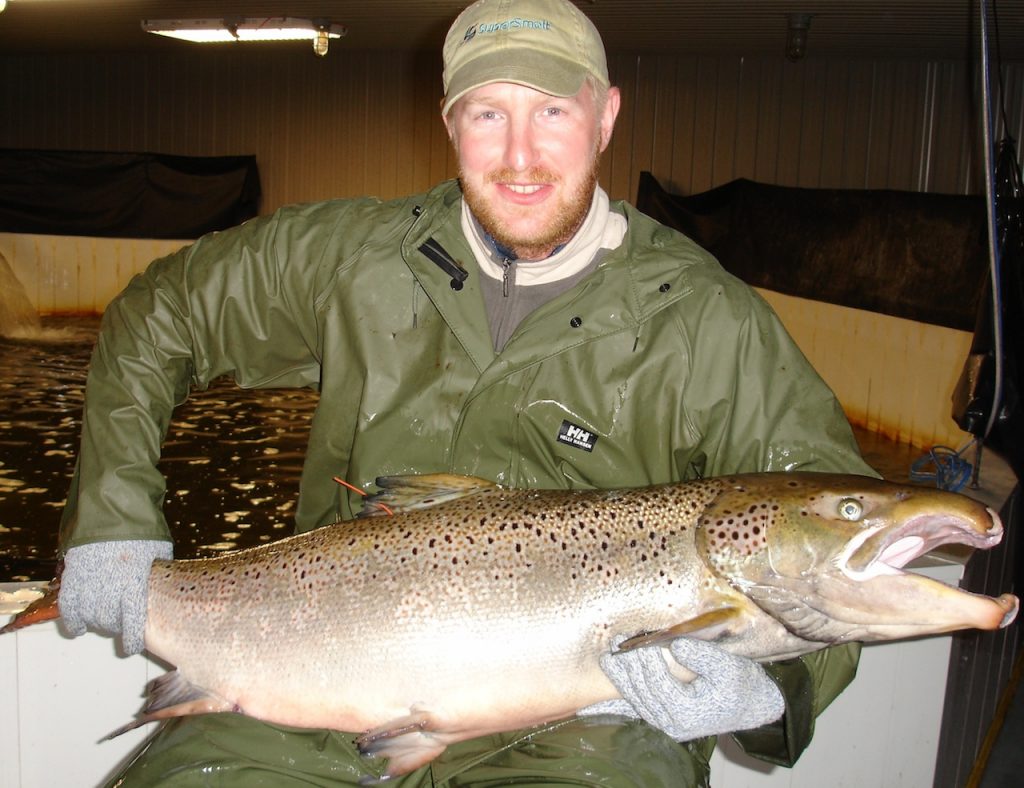
Building bridges for the future
March 19, 2015
By Muriel Hendrix
 It is only by understanding what farmers need that non-growers will be able to help the aquaculture industry in Maine reach its potential.
It is only by understanding what farmers need that non-growers will be able to help the aquaculture industry in Maine reach its potential.At the beginning of the Maine Aquaculture R&D Forum held in Portland, Maine in January, Maine Aquaculture Association director Sebastian Belle urged the non-grower attendees to “Stand up, find a farmer and ask what he needs.”
This, says Anne Langston, associate director at University of Maine’s Aquaculture Research Institute and co-organizer of the forum, was the essence of the gathering – building bridges between the stakeholders of the aquaculture industry in Maine, where aquaculture has enormous potential for growth. As Belle noted, Maine has 5,300 miles of coastline, of which 1,374 acres is currently leased by marine farmers, less than .03 percent of Maine state waters. Presently, he said, Maine leads the nation in growth in the aquaculture sector. However, he and other leaders in the industry are aware that they must take action to support its growth before recreational and development pressures close off opportunities to use more of the coastline for aquaculture projects.
The over 120 attendees at the forum, which Langston says was the brainchild of the Maine Aquaculture Coordinating Council, represented every facet of the industry, including growers, processors, distributors, researchers, small business advisors and investors.
Industry constraints discussed
Growers provided their needs for moving forward. Representing oyster growers, Chris Davis of Pemaquid Oyster Co, director of Maine Aquaculture Innovation Center and co-organizer of the forum, shared results of a survey of Maine oyster growers. It revealed they found bottlenecks like predation, disease, water quality monitoring and access to capital and permitting time as their greatest barriers to success. These setbacks are particularly frustrating because there is a huge demand for Maine oysters.
Among mussel growers’ needs delineated by Carter Newell, partner in Pemaquid Mussels Farms and Pemaquid Oyster Co, were sources of uniform seed during the spring and fall of each year; optimal raft culture systems, the latest processing machinery, ports for unloading and new value added products like modified atmosphere packs. He offered some alternative solutions like co-locating mussel and wind farms and increasing efficiency with up to date technology.
Representing salmon farming, Greg Lambert of Cooke Aquaculture cited effective and sustainable sea lice management as a bottleneck to efficiency and offered the possible alternative of making cleaner lumpfish more cost effective by developing a side market for its caviar. He also discussed the need for research on genetic selection, cold water tolerance, non-lethal control of predation by seals, ways to improve fish health and improved feed, particularly with alternative protein sources.
Paul Dobbins co-owner of Ocean Approved, noted that determining optimum depth for droplines at different times of the year is important for the seaweed industry. Other needs included purchasing up to date equipment, speeding up growth and developing sound marketing strategies to distinguish Maine seaweed product from China’s seaweed, which dominates world markets.
Tap Pryor of Acadia Harvest International, spoke about the major bottlenecks in land-based re-circ systems for raising fish. One, he said, is choosing the best species. Acadia has achieved good results with California yellowtail, and Pryor also noted the strong market for Black Sea Bass, Pompano and Bluefin Tuna. However, he said, the latter three need additional research on spawning.
Langston plans to post presentations on the forum website. “Now,” she says, “we need to keep people connected and informed. We’re determined to maintain the momentum and follow up this forum with dissemination of the identified priorities and establishment of working groups to develop these R&D topic areas.
As Carter Newell said when he concluded his presentation: “We can grow it, the market is there, what are we waiting for?”
— Muriel L. Hendrix
Advertisement
- Lockheed seeking partners for global energy and food security projects
- Maine Aquaculture Development Plan overhauled





